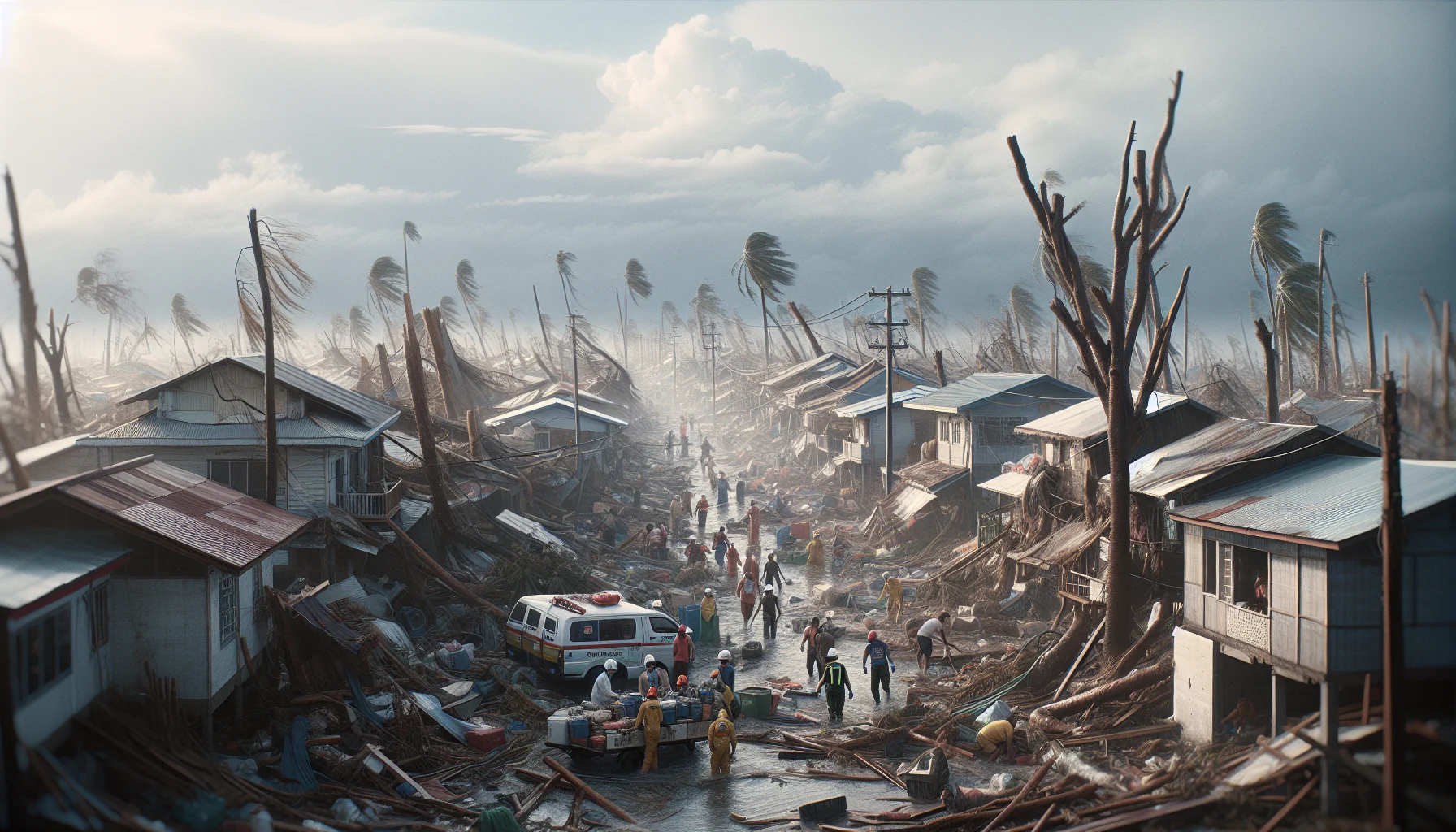
Typhoon Phanfone
by: The Calamity Calendar Team
December 24, 2019
When most of the world was celebrating the joy of Christmas Eve in 2019, a very different story was unfolding in the Eastern Visayas region of the Philippines. On December 24, 2019, Typhoon Phanfone, locally known as Ursula, made its formidable entrance, ushering in destruction and despair rather than the festive spirit of hope and happiness. This article delves into the chronological sequence of this catastrophic event and its lingering impact on the Filipino archipelago.
Birth of a Typhoon
The first signs of trouble arose on December 19, 2019. Far away in the expanse of Micronesia, a tropical depression was detected. Little did anyone know that nature was preparing an unwelcome Christmas gift for the Philippines. As the system made its way westward, it gestated and grew, drawing strength from the warm waters of the Pacific Ocean—a perfect cradle for typhoons.
By December 22, the storm matured into a tropical storm and officially earned its name—Phanfone. Residents across the central Philippines, already well-versed in the routine of typhoon preparedness, braced themselves for the oncoming storm. However, as was evident later, the intensity of Phanfone was anything but routine.
A Christmas to Remember
In the pre-dawn hours of December 24, Phanfone gathered formidable strength, escalating into a typhoon as it approached land. The winds howled and rains poured down with a relentless fury as the storm made its initial landfall on Samar Island, specifically in the province of Eastern Samar.
Characteristically unyielding, Typhoon Phanfone cut a treacherous path across the Visayas region, making no fewer than seven landfalls over the course of its journey through the central Philippines. The names of the islands in its path—Leyte, Biliran, Masbate, Aklan, Antique, Capiz, and Romblon—now stand ominously in the annals of meteorological history.
Breaking the Dawn on December 26
Though it made its angry path much like a river tearing through a valley, Phanfone's wrath was short-lived. By December 26, it exited into the South China Sea. However, the brief two days of havoc left scars deep and wide on both the geography and the hearts of those who lived through it.
Thanks for subscribing!
Human and Economic Tragedy
Phanfone claimed the lives of approximately 50 individuals, a number that slowly came to light as the debris cleared and the floodwaters receded. Each loss was mourned deeply, each absence felt acutely in the close-knit communities that make up the heart of the Philippines.
But the tragedy did not end with loss of life. More than 300,000 people found themselves displaced, their homes and belongings swept away. As the winds died down, the landscape revealed more than just traces of the storm; what lay before the affected residents were scenes of shattered realities.
Economically, the typhoon dealt a hammer blow to the region. It inflicted damages upwards of 2 billion PHP (around $39.5 million USD), hitting hardest in agriculture and infrastructure—industries that these provinces heavily depend on. The loss of farmlands threatened food security for thousands, while the obliteration of roads and power lines disrupted life and the flow of much-needed aid.
Resilience and Recovery
Despite the grim aftermath, the Filipino spirit proved resilient in what came next. Government agencies, local officials, and NGOs rapidly coordinated response efforts, prioritizing immediate relief and shelter for the millions affected. Families who lost more than just their homes found solace in community, often huddling together in makeshift accommodations.
The road to recovery involved herculean efforts—clearing debris, restoring power, and rebuilding the essential infrastructure that connected families to schools, markets, and healthcare facilities. Lessons learned from past calamities, including Typhoon Haiyan in 2013, were put into practice, streamlining the aid process and optimizing the use of available resources.
Learning from the Past
In the months and years following Typhoon Phanfone, conversations have steadily shifted towards future preparedness. The typhoon highlighted a need for enhanced forecasting models and intensified disaster risk reduction initiatives.
Awareness campaigns have become integral in educating communities about evacuation procedures, and projects focused on improving building codes have gained momentum to safeguard homes against future calamities. The country's natural susceptibility to typhoons does not preclude the capacity to adapt and survive.
Looking Forward
As the world continues to grapple with the effects of climate change, the question is not whether another typhoon will strike the Philippines but rather when and how prepared the country will be to meet it.
In the face of such undeniable challenges, one factor remains steadfast—the fortitude of the Filipino people. Fueled by resilience and a commitment to safeguarding their future, they continue to rise from the ruins, rebuilding not just structures, but hope, one brick at a time.
Through the storm and the silence it leaves behind, the story of Typhoon Phanfone remains a reminder of nature's formidable power and humanity's equally indomitable spirit.
Stay in the Loop!
Become a Calamity Insider and get exclusive Calamity Calendar updates delivered straight to your inbox.
Thanks! You're now subscribed.